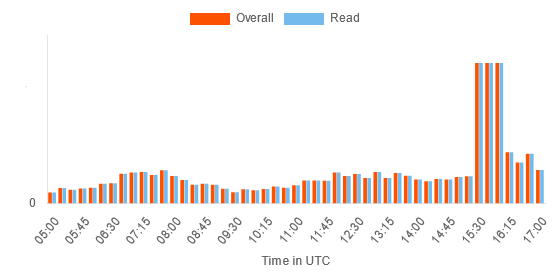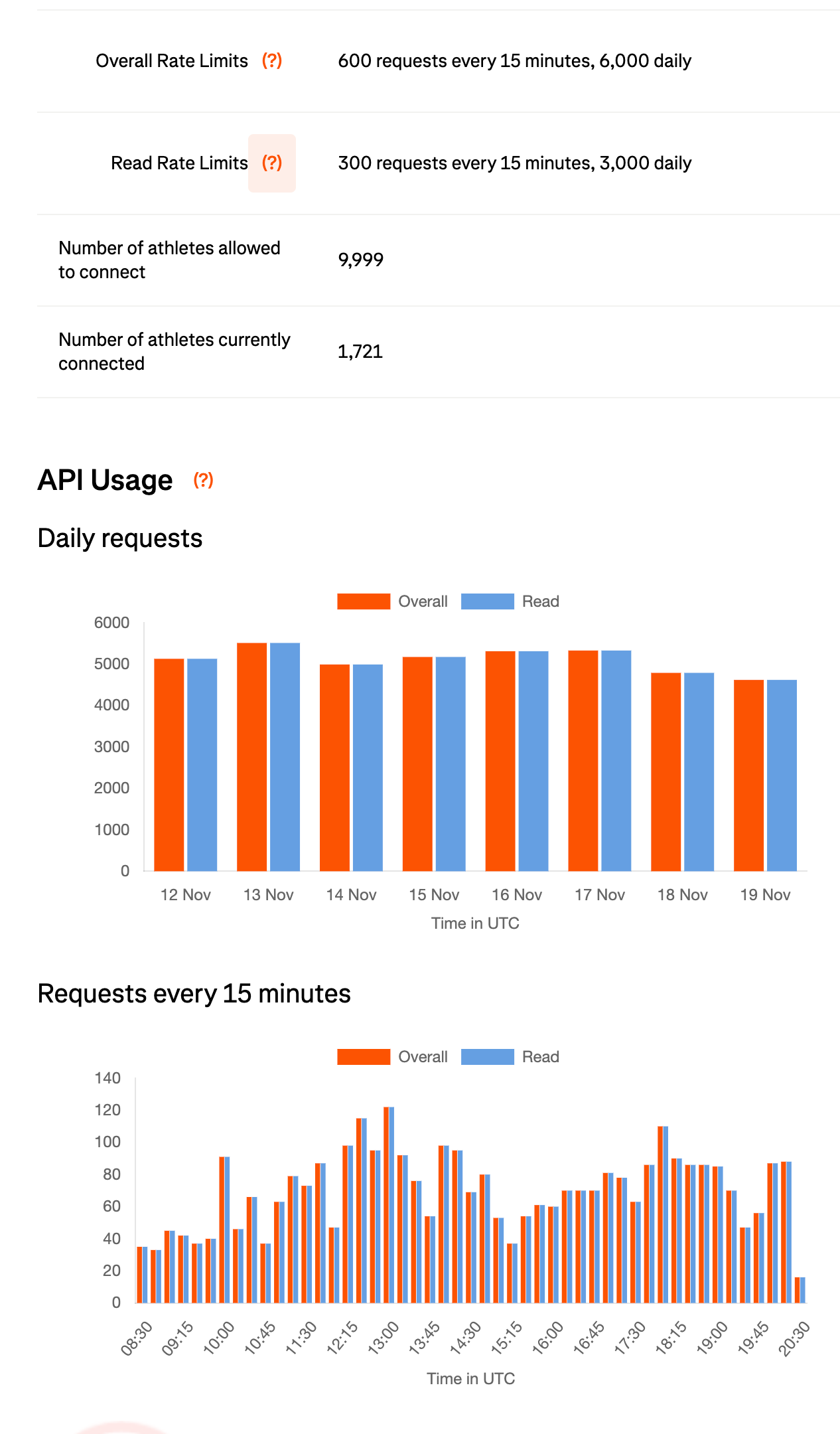Hello!
I'm writing an application that requires storing information about new activities in realtime as they come in from athletes. I have been successful in getting the creation of new activities sent to my server through the web hook. New Activities do not include any metadata about the new activity, so I have to follow up with additional calls to fetch the data.
I've explored the following 2 approaches but both have their problems:
Fetch By Activity Id: the most straight forward, I could hit `/activities/{{ id }}` for every activity that comes from the web hook. This would be the most expensive against my daily rate limit, though.
Fetch By Activity Date Range: in order to avoid hitting rate limits, I could hit `/athlete/activities` and run against a date range to fetch multiple activities at once. This is great cause it allows me to "batch" requests, although the `event_time` that comes back from the web hook does not accurately reflect the activity event time (this is especially problematic when syncing with datasources like Apple Fitness where there could be a delay in the import)
How do I properly go about fetching activities for athletes in realtime while still sitting within the rate limits of the API?






